Development and validation of a 30-day mortality index based on pre-existing medical administrative data from 13,323 COVID-19 patients: The Veterans Health Administration COVID-19 (VACO) Index
- PMID: 33175863
- PMCID: PMC7657526
- DOI: 10.1371/journal.pone.0241825
Development and validation of a 30-day mortality index based on pre-existing medical administrative data from 13,323 COVID-19 patients: The Veterans Health Administration COVID-19 (VACO) Index
Abstract
Background: Available COVID-19 mortality indices are limited to acute inpatient data. Using nationwide medical administrative data available prior to SARS-CoV-2 infection from the US Veterans Health Administration (VA), we developed the VA COVID-19 (VACO) 30-day mortality index and validated the index in two independent, prospective samples.
Methods and findings: We reviewed SARS-CoV-2 testing results within the VA between February 8 and August 18, 2020. The sample was split into a development cohort (test positive between March 2 and April 15, 2020), an early validation cohort (test positive between April 16 and May 18, 2020), and a late validation cohort (test positive between May 19 and July 19, 2020). Our logistic regression model in the development cohort considered demographics (age, sex, race/ethnicity), and pre-existing medical conditions and the Charlson Comorbidity Index (CCI) derived from ICD-10 diagnosis codes. Weights were fixed to create the VACO Index that was then validated by comparing area under receiver operating characteristic curves (AUC) in the early and late validation cohorts and among important validation cohort subgroups defined by sex, race/ethnicity, and geographic region. We also evaluated calibration curves and the range of predictions generated within age categories. 13,323 individuals tested positive for SARS-CoV-2 (median age: 63 years; 91% male; 42% non-Hispanic Black). We observed 480/3,681 (13%) deaths in development, 253/2,151 (12%) deaths in the early validation cohort, and 403/7,491 (5%) deaths in the late validation cohort. Age, multimorbidity described with CCI, and a history of myocardial infarction or peripheral vascular disease were independently associated with mortality-no other individual comorbid diagnosis provided additional information. The VACO Index discriminated mortality in development (AUC = 0.79, 95% CI: 0.77-0.81), and in early (AUC = 0.81 95% CI: 0.78-0.83) and late (AUC = 0.84, 95% CI: 0.78-0.86) validation. The VACO Index allows personalized estimates of 30-day mortality after COVID-19 infection. For example, among those aged 60-64 years, overall mortality was estimated at 9% (95% CI: 6-11%). The Index further discriminated risk in this age stratum from 4% (95% CI: 3-7%) to 21% (95% CI: 12-31%), depending on sex and comorbid disease.
Conclusion: Prior to infection, demographics and comorbid conditions can discriminate COVID-19 mortality risk overall and within age strata. The VACO Index reproducibly identified individuals at substantial risk of COVID-19 mortality who might consider continuing social distancing, despite relaxed state and local guidelines.
Conflict of interest statement
The authors have declared that no competing interests exist.
Figures
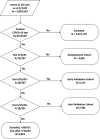
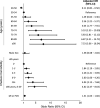
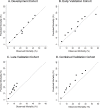
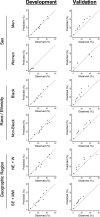
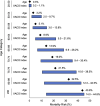
References
-
- Yan L, Zhang H-T, Goncalves J, Xiao Y, Wang M, Guo Y, et al. An interpretable mortality prediction model for COVID-19 patients. Nature Machine Intelligence. 2020;2:283–8.
Publication types
MeSH terms
Grants and funding
LinkOut - more resources
Full Text Sources
Miscellaneous

